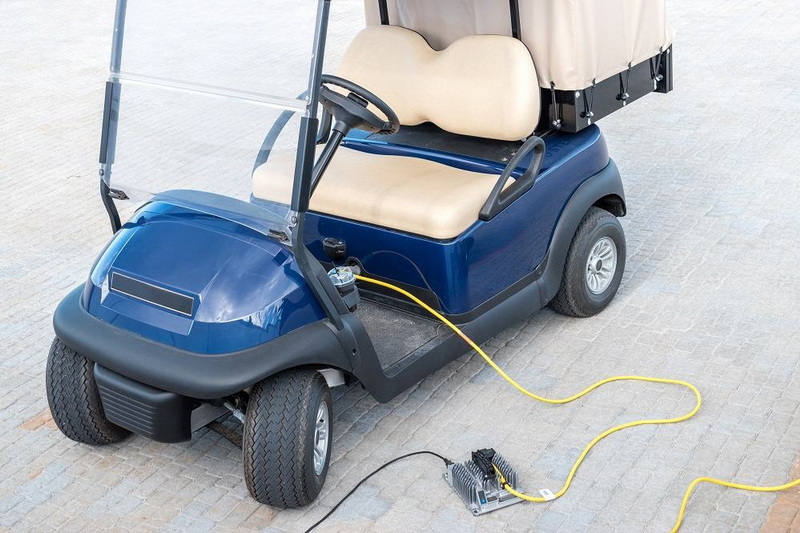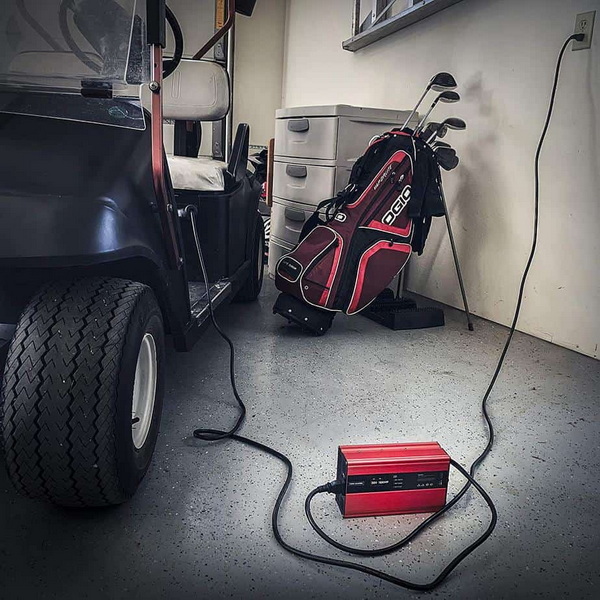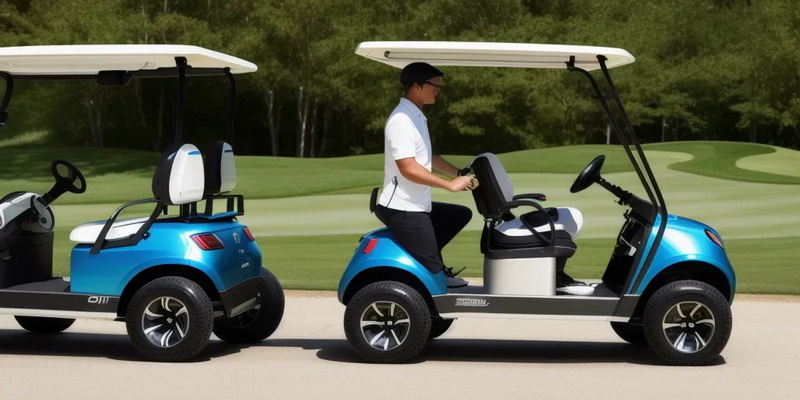Content Menu
● Understanding Electric Golf Cart Batteries
>> Types of Batteries
● Charging Methods
>> Standard Wall Charger
>> Fast Charger
>> Solar Charger
● Safety Precautions
● Battery Maintenance Tips
● Troubleshooting Charging Issues
>> Charger Not Working
>> Batteries Not Charging
>> Overheating
● Conclusion
● Related Questions
>> 1. How long does it take to charge an electric golf cart?
>> 2. Can I use a car charger to charge my golf cart?
>> 3. How often should I charge my electric golf cart?
>> 4. What should I do if my golf cart batteries are not holding a charge?
>> 5. Is it safe to charge my golf cart indoors?
Charging an electric golf cart is a straightforward process, but it requires understanding the components involved and following the correct procedures to ensure safety and efficiency. This guide will walk you through the steps to charge your electric golf cart, the types of chargers available, and some tips for maintaining your cart's battery.

Understanding Electric Golf Cart Batteries
Electric golf carts typically use lead-acid batteries or lithium-ion batteries. Lead-acid batteries are the most common type found in golf carts. They are reliable and cost-effective but require regular maintenance. Lithium-ion batteries, on the other hand, are lighter, have a longer lifespan, and require less maintenance, but they are more expensive.
Types of Batteries
1. Lead-Acid Batteries: These batteries are divided into two categories: flooded and sealed (AGM or gel). Flooded batteries require regular water checks and maintenance, while sealed batteries are maintenance-free.
2. Lithium-Ion Batteries: These batteries are becoming increasingly popular due to their efficiency and longevity. They charge faster and have a higher energy density, meaning they can store more energy in a smaller space.
Charging Methods
Charging your electric golf cart can be done in several ways, depending on the type of charger you have and the battery type. Here are the most common methods:
Standard Wall Charger
Most electric golf carts come with a standard wall charger that plugs into a regular outlet. This charger is designed to charge the batteries slowly and safely. Here's how to use it:
- Step 1: Ensure the golf cart is turned off.
- Step 2: Plug the charger into a standard outlet.
- Step 3: Connect the charger to the golf cart's charging port.
- Step 4: Turn on the charger (if it has a power switch).
- Step 5: Monitor the charging process. Most chargers have indicator lights that show when the batteries are charging and when they are fully charged.
Fast Charger
Fast chargers are available for those who need to charge their golf carts quickly. These chargers can significantly reduce charging time but should be used with caution. Here's how to use a fast charger:
- Step 1: Turn off the golf cart.
- Step 2: Connect the fast charger to the golf cart's charging port.
- Step 3: Plug the charger into a power source.
- Step 4: Follow the manufacturer's instructions for the specific fast charger being used.
Solar Charger
For environmentally conscious users, solar chargers are an excellent option. They harness solar energy to charge the golf cart's batteries. Here's how to set up a solar charger:
- Step 1: Install solar panels in a location that receives ample sunlight.
- Step 2: Connect the solar charger to the golf cart's battery system.
- Step 3: Monitor the charging process to ensure the batteries are charging correctly.

Safety Precautions
When charging your electric golf cart, safety should always be a priority. Here are some essential safety tips:
- Avoid Overcharging: Overcharging can damage the batteries and reduce their lifespan. Always use a charger with an automatic shut-off feature.
- Charge in a Well-Ventilated Area: Charging batteries can produce gases that may be harmful if inhaled. Ensure the area is well-ventilated.
- Check for Damage: Before charging, inspect the charger and cables for any signs of damage. Do not use damaged equipment.
- Follow Manufacturer Instructions: Always refer to the manufacturer's guidelines for charging procedures specific to your golf cart model.
Battery Maintenance Tips
Proper maintenance of your golf cart's batteries can extend their lifespan and improve performance. Here are some maintenance tips:
- Regularly Check Water Levels: For flooded lead-acid batteries, check the water levels regularly and top off with distilled water as needed.
- Clean Battery Terminals: Keep the battery terminals clean and free from corrosion. Use a mixture of baking soda and water to clean them if necessary.
- Store Properly: If you're not using the golf cart for an extended period, store it in a cool, dry place and ensure the batteries are fully charged.
Troubleshooting Charging Issues
If you encounter problems while charging your electric golf cart, here are some common issues and solutions:
Charger Not Working
If the charger does not seem to be working, check the following:
- Ensure it is plugged into a working outlet.
- Inspect the charger for any visible damage.
- Check the connections between the charger and the golf cart.
Batteries Not Charging
If the batteries are not charging, consider these steps:
- Ensure the golf cart is turned off during charging.
- Check the battery connections for corrosion or loose wires.
- Test the batteries with a multimeter to ensure they are functioning correctly.
Overheating
If the charger or batteries are overheating, immediately disconnect the charger and allow everything to cool down. Overheating can indicate a problem with the charger or batteries.
Conclusion
Charging an electric golf cart is a simple process that, when done correctly, can enhance the performance and longevity of your cart. By understanding the types of batteries, charging methods, and maintenance tips, you can ensure your golf cart is always ready for the course. Remember to prioritize safety and follow the manufacturer's guidelines for the best results.

Related Questions
1. How long does it take to charge an electric golf cart?
Charging time can vary based on the battery type and charger used. Typically, it takes 4 to 8 hours for a full charge with a standard charger.
2. Can I use a car charger to charge my golf cart?
No, car chargers are not designed for golf cart batteries and can cause damage. Always use a charger specifically designed for your golf cart.
3. How often should I charge my electric golf cart?
It's best to charge your golf cart after each use, especially if you've used more than half of the battery capacity.
4. What should I do if my golf cart batteries are not holding a charge?
If your batteries are not holding a charge, they may be old or damaged. Consider testing them with a multimeter or consulting a professional for replacement options.
5. Is it safe to charge my golf cart indoors?
Yes, but ensure the area is well-ventilated to avoid the buildup of gases produced during charging.










































